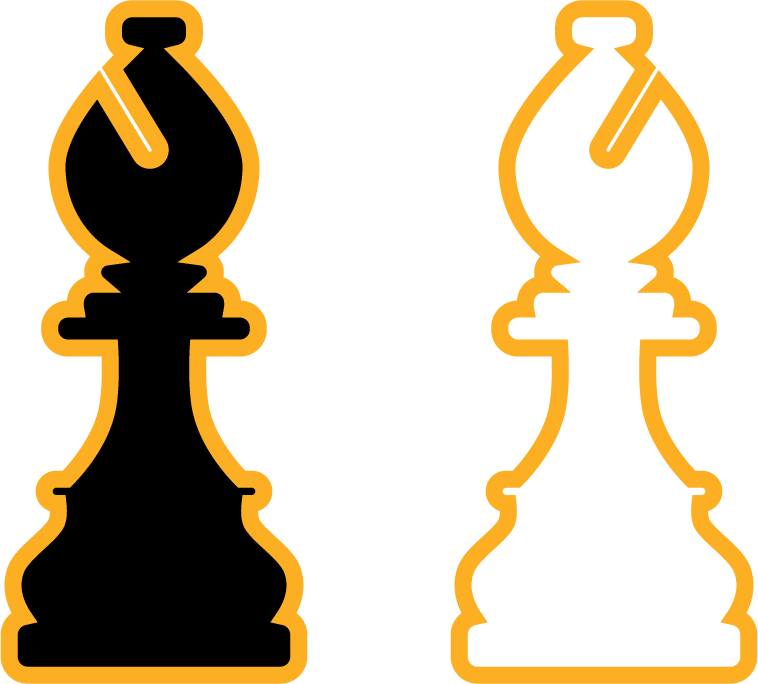Have you ever wondered why some people swear by writing their thoughts down, while others struggle to even pick up a pen? The truth is, there’s no “right” way to do it. Journaling is a deeply personal practice that adapts to your needs, not the other way around.
From Leonardo da Vinci to Frida Kahlo, many great minds have used writing as a tool for exploration and creativity. Neuroscience even shows that putting pen to paper can rewire your subconscious mind, helping you process emotions and gain clarity.
Whether you’re a minimalist or a creative soul, this practice is for everyone. You don’t need a fancy notebook or a strict routine. Start with what feels right, and let it evolve naturally. Ready to take the first step? Here’s how to begin.
Key Takeaways
- Journaling is a flexible, rule-free practice for personal exploration.
- Writing can rewire your subconscious mind and improve emotional clarity.
- Historical figures like da Vinci and Frida Kahlo used journaling for creativity.
- You don’t need special tools—start with any notebook or digital app.
- Focus on a non-judgmental approach to make it a sustainable habit.
Why Journaling is a Powerful Tool for Self Growth
What if a simple habit could unlock deeper understanding of yourself? Writing has been proven to be more than just a creative outlet—it’s a transformative practice that reshapes your mind and enhances your awareness. Whether you’re exploring your thoughts or tracking your goals, this habit offers a unique way to foster personal development.
The Science Behind Writing and Personal Development
When you write by hand, your brain’s prefrontal cortex lights up. This area is responsible for decision-making and problem-solving. Studies from UCLA show that expressive writing can reduce anxiety and improve emotional clarity. Writing also triggers dopamine release, especially when you track progress or set goals.
Neuroplasticity, the brain’s ability to rewire itself, plays a key role. Daily writing helps create cognitive shifts, making it easier to identify and change unhelpful thought patterns. Think of yourself as a scientist of your life—each entry is an experiment in understanding your mind.
How Writing Enhances Self-Awareness
Writing allows you to observe your thoughts without judgment. Stream-of-consciousness entries can reveal recurring patterns, while constructive reflection helps you process emotions effectively. This practice fosters emotional awareness and clarity, as 94% of writers report feeling more in tune with their feelings.
Historical figures like Marcus Aurelius used writing to reflect on their lives. His “Meditations” is a timeless example of how this habit can lead to profound insights. Modern case studies in social work also highlight its benefits for emotional well-being.
By writing regularly, you can move from rumination to constructive reflection. This shift not only improves mental health but also supports long-term personal development.
Understanding the Benefits of Journaling
What if a few minutes of writing could transform your day? Writing isn’t just about putting words on paper—it’s a powerful tool for improving your mental health, achieving your goals, and managing stress. Whether you’re looking for emotional clarity or a way to track progress, this practice offers tangible benefits backed by science.
Mental Health and Emotional Clarity
Research from Johns Hopkins shows that writing can reduce symptoms of depression. When you express your thoughts, it helps lower cortisol levels, the hormone linked to stress. This process promotes emotional clarity and can shift your mindset from scarcity to gratitude.
For overwhelmed days, try the “5-minute rule.” Write for just five minutes to release pent-up emotions. This simple habit can make a big difference in your mental health over time.
Goal Setting and Achievement
Writing down your goals increases your chances of achieving them by 68%. Use the SMART framework (Specific, Measurable, Achievable, Relevant, Time-bound) to structure your plans. Tools like Passion Planner or Lavendaire’s TBH deck can help you stay organized.
Tracking progress also triggers dopamine release, making it easier to form lasting habits. Whether you prefer digital apps or analog notebooks, choose a method that aligns with your goals.
By combining emotional disclosure with structured planning, you can manage both acute and chronic stress effectively. This dual approach supports long-term well-being and personal success.
Different Types of Journaling for Personal Growth
Exploring different ways to write can open new doors to understanding yourself. Each style offers unique benefits, from boosting positivity to unlocking creativity. Whether you’re new to this practice or looking to try something fresh, there’s a method that fits your needs.

Gratitude Writing
Focusing on what you’re thankful for can shift your mindset. Studies show that gratitude writing increases serotonin levels, improving overall happiness. Start by listing three things you’re grateful for each day. This simple habit can help you notice the positive patterns in your life.
For a deeper dive, try the “I release…” prompt framework. Write down what you’re letting go of, whether it’s stress or negative thoughts. This practice can create a sense of emotional freedom.
Reflective Writing
Reflective writing helps you process your thoughts and feelings. It’s a space to explore your inner world without judgment. Shadow work prompts, like “What am I avoiding?” can reveal hidden aspects of your mind.
Compare structured approaches, like Anne Frank’s documentary style, with unstructured methods, like da Vinci’s idea journals. Both offer valuable insights into personal development.
Creative Writing
Unleash your imagination with creative writing. Magazine collages, vision boards, and artistic layouts can make this practice fun and engaging. Pinterest trends show a rise in creative spreads, proving its popularity.
Timed free-writing exercises can help you break through mental blocks. For those managing ADHD, art journals have been shown to improve focus and emotional well-being.
Whether you prefer structured or freeform approaches, creative writing can be a powerful tool for self-expression and discovery.
How to Start Journaling: A Step-by-Step Guide
Starting your writing journey begins with the right tools and a comfortable space. Whether you prefer analog or digital methods, having the proper setup can make all the difference. Let’s explore how to choose the best journal and create an environment that inspires creativity.
Choosing the Right Journal and Tools
Your journal is your canvas, so pick one that suits your style. Lay-flat notebooks are great for ease of use, while spiral-bound ones offer flexibility. Popular brands like Moleskine and Leuchtturm provide premium options, but $5 Target notebooks are a budget-friendly alternative.
Pens matter too. Gel pens glide smoothly, while fountain pens add a touch of elegance. The right tools can enhance your writing experience and make it more enjoyable. For those who prefer digital, apps like Notion offer customizable templates.
Setting Up Your Journaling Space
Your space should feel inviting and distraction-free. Choose a quiet corner with good lighting—natural light is ideal. Pair it with a calming scent like lavender or eucalyptus to create a high-vibe atmosphere.
Ergonomics are key. Ensure your desk and chair support good posture. Portable journal kits are perfect for writing on the go. For accessibility, consider adaptive tools like larger notebooks or voice-to-text apps.
Customization can make your space uniquely yours. Diana’s sticker method adds a personal touch, while vision boards can inspire creativity. Whether you’re at home or on the move, your setup should encourage consistency every day.
Creating a Journaling Routine That Works for You
Struggling to make writing a consistent part of your day? The key lies in building a routine that fits your lifestyle. Whether you’re a morning person or a night owl, finding the right time can make all the difference.
Finding the Best Time to Write
Your body’s natural rhythms play a big role in productivity. Analyze your circadian rhythms to identify when you’re most alert. For some, mornings are ideal for clarity, while others find evenings more reflective.
Habit-stacking can help. Pair writing with an existing routine, like after your morning coffee or before your nightly shower. This technique builds consistency without feeling forced.
Making Writing a Daily Habit
Start small with the 5-minute rule. Commit to just five minutes a day to build momentum. Over time, this can grow into a lasting daily habit.
Use tools like bullet journal rapid-logging to track your progress. Morning pages can clear your mind, while evening reflections help process the day. Choose what works best for you.
For busy schedules, try micro-writing strategies. Even a few sentences during lunch or a commute can keep the habit alive. Pair it with a smartphone detox to stay focused.
Tracking your consistency with a habit chain calendar can be motivating. Celebrate small wins to keep the momentum going. Over a week, you’ll see how far you’ve come.
Whether you write daily or weekly, the goal is to make it work for you. Experiment, adjust, and find what brings you joy and clarity.
Journaling Prompts to Kickstart Your Practice
Ever feel stuck on what to write? Prompts can spark ideas and guide your thoughts. Whether you’re diving into self-reflection or focusing on gratitude, these prompts are designed to help you explore your inner world.
Prompts for Self-Reflection
Self-reflection prompts encourage you to dig deeper. Start with surface-level questions like, “What made me smile today?” Then, move to shadow work with prompts such as, “What am I avoiding?” These exercises help you uncover hidden patterns in your self.
For a unique twist, try intergenerational dialogue. Ask yourself, “What advice would I give to my younger self?” or “What lessons can I learn from my elders?” These prompts foster meaningful connections across time.
Prompts for Gratitude and Positivity
Gratitude prompts shift your focus to the positive things in life. Begin with simple questions like, “What three things am I thankful for today?” Seasonal prompts, such as “What am I looking forward to this year?” add variety and keep your practice fresh.
Incorporate the “I need/I celebrate” framework. Write down what you need to release and what you’re celebrating. This balance helps you acknowledge challenges while appreciating the good.
For a creative approach, try viral TikTok trends like the “letter to future self.” Write a message to yourself five years from now. It’s a powerful way to set intentions and track growth.
Finally, consider industry-specific prompts. Healthcare workers might reflect on, “How did I help others today?” while tech professionals could explore, “What new ideas inspired me this week?” Tailored prompts make the practice more relevant and impactful.
Overcoming Common Journaling Challenges
Ever felt stuck or unsure about how to keep your writing habit alive? Challenges like writer’s block or maintaining consistency can make this practice feel overwhelming. But with the right strategies, you can turn these obstacles into opportunities for growth.
Dealing with Writer’s Block
Writer’s block often stems from perfectionism. Give yourself permission to write an “ugly first page.” Focus on the process, not the outcome. Bullet points or voice-to-text tools can help bypass mental blocks and keep your thoughts flowing.
For those with ADHD, micro-writing strategies can be a game-changer. Write just a sentence or two when inspiration strikes. Keep an “emergency prompt” list handy for moments when your mind feels blank.
Staying Consistent with Your Practice
Building a consistent habit doesn’t mean writing every day. Start small—commit to a few minutes weekly. Use apps with reminder systems or find an accountability partner to stay on track.
If you miss a session, don’t stress. Reflect on what caused the lapse and adjust your approach. Therapeutic destruction rituals, like burning old entries, can also renew your commitment to the practice.
Remember, the goal is progress, not perfection. Celebrate small wins and keep experimenting until you find what works for you.
How to Use Journaling for Long-Term Self Growth
What if looking back at your past could help you shape a better future? Writing isn’t just about the present—it’s a tool for tracking your progress and gaining valuable insights over years. By reflecting on your entries, you can uncover patterns and make meaningful changes in your life.
Tracking Your Progress Over Time
One effective method is color-coded trend analysis. Assign colors to different themes, like emotions or goals, and track how they evolve. This visual approach makes it easier to spot patterns and measure progress.
Annual review templates are another great tool. At the end of each year, summarize your entries and identify key milestones. This practice helps you see how far you’ve come and set new goals for the next years.
For digital writers, data visualization techniques can turn your words into charts or graphs. Encryption methods also ensure your private thoughts stay secure, giving you peace of mind as you document your development.
Reflecting on Your Entries
Generational pattern tracking can reveal deeper insights. Look for recurring themes in your family history and compare them to your own experiences. This exercise can help you understand your behavior and make intentional changes.
Career progression mapping is another powerful technique. Document your professional journey, noting challenges and successes. Over years, this can serve as a roadmap for your development.
For physical journals, storage solutions like labeled boxes or shelves keep your work organized. Milestone celebration rituals, such as revisiting old entries, can also inspire gratitude and motivation.
Whether you prefer linear or non-linear review approaches, the goal is to gain clarity and grow. Legacy planning exercises, like writing letters to future generations, add a meaningful layer to your practice.
Incorporating Journaling into Your Self-Care Routine
Have you considered how blending writing with other activities can enhance your well-being? Writing is more than just a reflective practice—it’s a versatile tool that can complement your self-care routine. By pairing it with activities like yoga, meditation, or even a calming tea ritual, you can create a holistic approach to health and wellness.

Combining Writing with Other Self-Care Practices
Integrating writing into your daily activities can amplify their benefits. For example, try a yoga-writing flow sequence. After a few poses, jot down how your body feels or any thoughts that arise. This combination enhances both physical and mental health.
Tea rituals also pair well with writing. Brew your favorite blend, take a moment to savor it, and then write about the experience. This practice encourages mindfulness and helps you stay present.
Nature writing hybrids are another great option. Take your notebook outdoors and write about what you see, hear, or feel. This can deepen your connection to the environment and reduce stress.
Using Writing to Manage Stress and Anxiety
Writing is a powerful tool for managing stress and anxiety. Start with a sleep journal to track your thoughts before bed. This can help clear your mind and improve sleep quality.
For those with busy schedules, gym log combinations can be effective. After a workout, write about how you feel physically and emotionally. This practice reinforces the positive effects of exercise on your self-care routine.
Digital detox pairings are also worth exploring. Spend time away from screens and write about your experience. This can help you reconnect with yourself and reduce work-related stress.
Finally, consider ASMR writing techniques. Pair calming sounds with reflective writing to create a soothing experience. This combination can enhance mindfulness and promote relaxation.
Conclusion: Embrace Journaling for a Better You
Embracing this practice can lead to transformative changes in your life. It’s not about making drastic shifts but embracing small, consistent steps. Start with a 30-day challenge to build momentum and see how it fits into your routine.
Join global communities to share insights and learn from others. Cultural variations in this habit highlight its universal appeal. Whether you’re documenting your journey or passing down your thoughts, it’s a legacy of personal growth.
Ready to begin? Take the first step today. Explore advanced techniques as you progress, and remember, growth isn’t linear. As Lora Devries said, “Your journey is uniquely yours—embrace it fully.”
